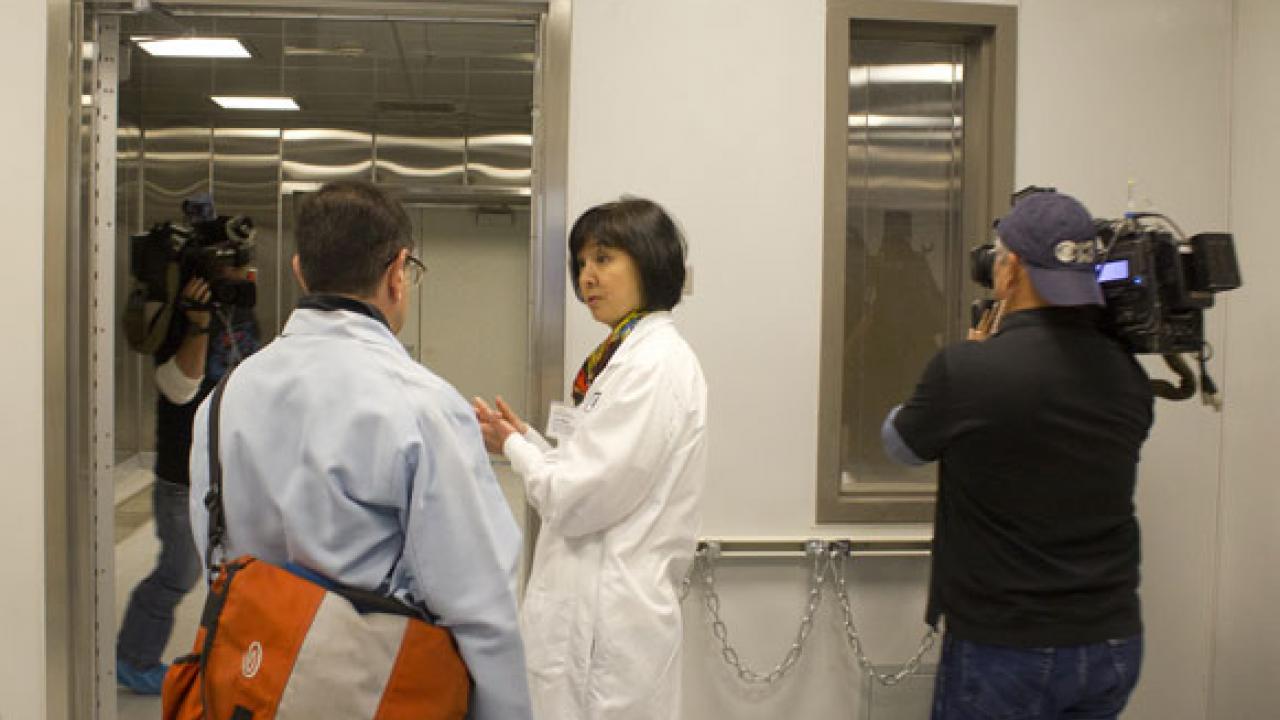New discoveries in lung disease and closer collaborations among researchers are the aims of the new Respiratory Disease Center at the California National Primate Research Center.
The building, constructed with a grant of $14.2 million from the National Institutes of Health through the American Reinvestment and Recovery Act (commonly referred to as stimulus money), was inaugurated Feb. 27 with an invited crowd of researchers, university officials and representatives of elected officials.
How does air pollution affect conditions like asthma or chronic obstructive pulmonary disease? How does exposure to wildfire smoke affect lung development? What are the long-term effects of being exposed to cigarette smoke at work? These are the kinds of questions researchers hope to address.
For example, chronic obstructive pulmonary disease, or COPD, is the fourth-leading cause of death in the United States. The disease is linked to smoking, but much about how it develops and how it might be treated remains mysterious.
“Just having a better understanding of the process of COPD would help us identify new targets for treatment,” said Dallas Hyde, director of the California National Primate Research Center.
Rhesus macaques are the preferred animal model for studying lung disease, because their lungs are very similar to those of people.
The 19,300-square-foot building comprises laboratories and office space for researchers. It includes facilities for testing pulmonary function as well as an inhalation exposure facility for testing the effects of pollutants such as ozone, dust mites and secondhand cigarette smoke on lung development.
The Respiratory Disease Center will be available for use by researchers across the country studying lung diseases and conditions. It replaces labs built more than 30 years ago, providing space for both long-running collaborations and new ventures with researchers from UC Davis and other institutions.
The building is expected to be occupied by this summer.
Media Resources
Dave Jones, Dateline, 530-752-6556, dljones@ucdavis.edu
